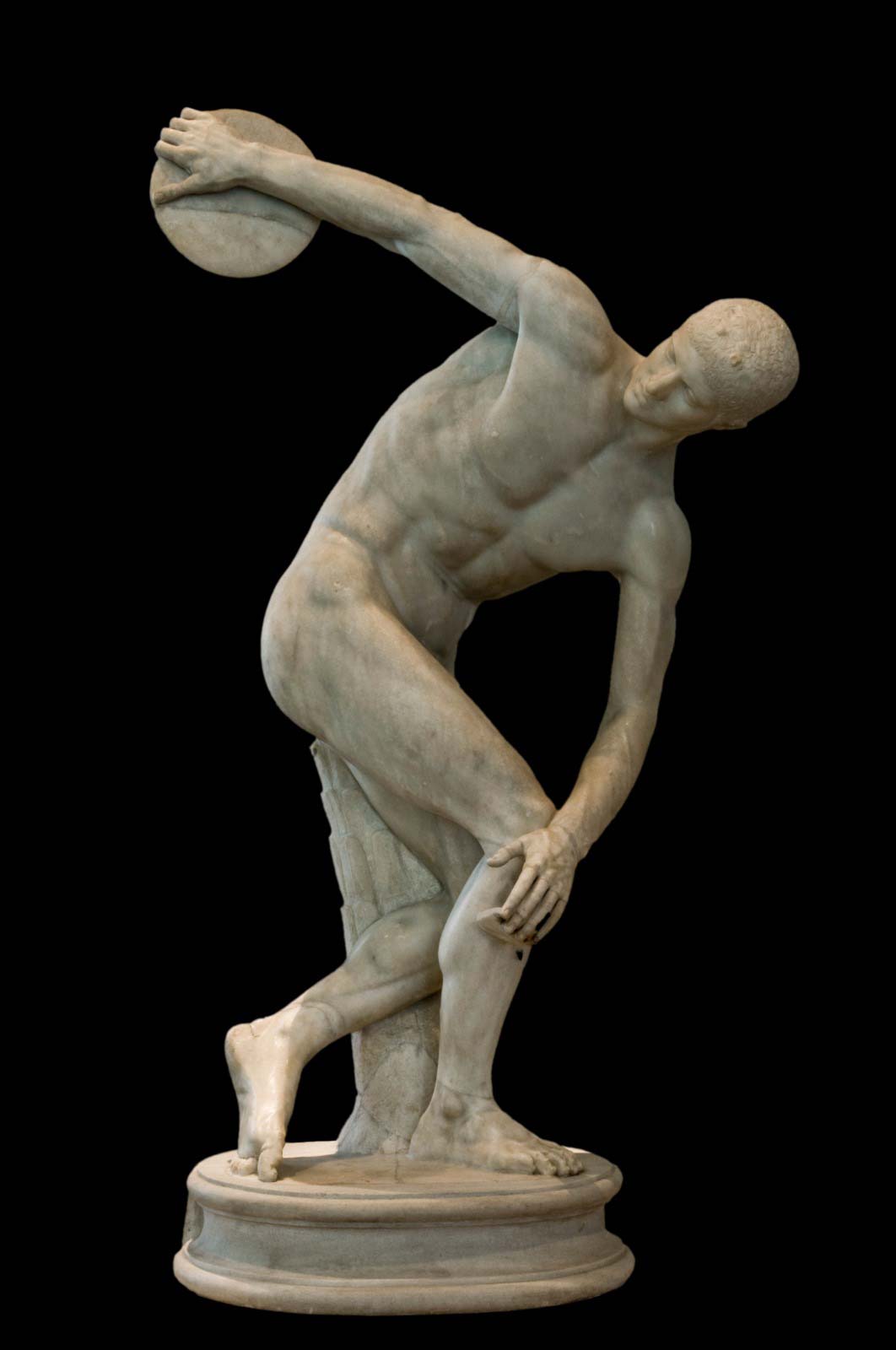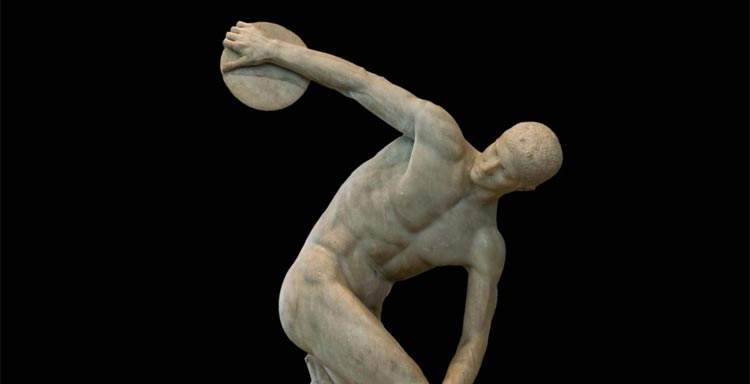Rome, the issue of moving the Discobolus explained well
A lively controversy has held sway in recent days in Rome: that over the displacement of the Lancellotti Disk, or the most complete marble copy of the Disk of Myron, a bronze work made in the fifth century B.C, and lost at an unspecified time: the marble work, which dates back to the second century AD, was discovered in 1781 on the Esquiline Hill and was named after the family, the Lancellotti family, who for years held the ownership. Since 1953, the Lancellotti Disk has been kept at the National Roman Museum, which has four locations: Palazzo Massimo alle Terme, Palazzo Altemps, the Baths of Diocletian and the Crypta Balbi. Today the Discobolus is in the Palazzo Massimo, but soon it will be moved to the Palazzo Altemps.
In fact, the museum will undergo a major reorganization, which we have already discussed in detail on these pages: in short, Palazzo Altemps will become a place for in-depth study of the history of collecting Roman antiquities, while Palazzo Massimo will trace the history of imperial Rome. As part of this reorganization, as was explained when the work was presented (in late December), the Discobolus will leave Palazzo Massimo and go to Palazzo Altemps. “As is well known,” the institute’s director, Stéphane Verger, explained to us, “the National Roman Museum is initiating the Great Urbs Project, made possible by the National Plan for Complementary Investments to the PNRR, which includes not only restoration work on the buildings in which the Museum is located, but also the expansion of the museum itinerary that will make the most of its extraordinary heritage. Numerous interventions affect all the venues but, in particular, are part of the important redevelopment of the StazioneTermini area that involves Roma Capitale, Grandi Stazioni and other institutions of the Ministry of Culture. At the Baths of Diocletian, the Great Halls I to VII, which have been closed for decades, and the upper galleries of the Certosa cloisters will reopen; at Palazzo Massimo, the internal courtyard is to be covered, which will become a large exhibition space: the cultural offer will be significantly enriched, with the creation of a real Culture Island in front of Termini Station. During the course of these works, which will inevitably lead to closures of venues, even partial ones, the project Depositi (re)scoperti (re)discoveries has been initiated, which, after the first exhibitions at the Baths of Diocletian, is now extended outside the National Roman Museum thanks to the collaboration of the Lazio Regional Museums Directorate: the third stage of this project is currently on display at the Museum of the Ships of Nemi and will continue soon at the Archaeological Museum of Sperlonga.”
Against the move, however, protested the coordination of residents of the Esquilino and Castro Pretorio areas, who do not want to see themselves deprived of one of the works-symbols of this area of Rome (Palazzo Altemps is two and a half kilometers from here, a walk of just over half an hour). “After the closure of the Museum of Oriental Art in 2017, we are witnessing another controversial and effectively punitive operation against this area of Roma Capitale that has Unesco Site status,” residents told the Roma Today newspaper. “The relocation of the statues-symbols of Palazzo Massimo is in fact justified with the need to ’intercept tourist flows on the most important route of the historic center,’ forgetting that Termini Station sees 480,000 people pass by every day, including Romans and travelers, and is the place most easily reached from every part of the city. Precisely because of its location, as well as its importance, Palazzo Massimo is already the most visited site of the National Roman Museum: enormous potential, which in any other European capital would be by all means enhanced, rather than disregarded.” Moreover, they protested that the decision would be made by “skipping the participatory phase of the citizenship.”

Initially, it was planned that the Discobolus, which until last April 10 was on display at the Scuderie del Quirinale for the exhibition Arte Liberata, dedicated to the theme of cultural heritage at risk during World War II, would reach Palazzo Altemps soon after the end of the exhibition, as the museum had announced in a post on its Facebook page. Already the decision to loan the work for the exhibition had been harshly criticized, but the idea of seeing the Discobolus leave for Palazzo Altemps inflamed local residents, who also held sit-ins in protest in the weeks that followed.
For now, Director Verger has determined that the Discobolus will return to the Palazzo Massimo instead of leaving immediately for Palazzo Altemps, but at the end of the work (scheduled for three years from now), the work will still reach its new destination. “The URBS project,” Verger goes on to explain to Finestre sull’Arte, “involves an overall reorganization of the exhibition routes that will make the story of Rome’s history clearer through the buildings and the archaeological and artistic collections. In the Palazzo Altemps venue, the itinerary dedicated to ancient and modern collecting of Greek sculptures in Rome will be enriched and completed, and together with works from historical collections of the major Roman families, other sculptures will be presented, some coming from the deposits, others from the venues of Palazzo Massimo and the Baths of Diocletian. So here it is that, when the work is completed, the Lancellotti Disk will find a prominent place precisely in the Palazzo Altemps venue where all the events of its long history, from its discovery at the Villa Palombara at the Esquiline to its recovery from Germany after the war, will be enhanced to the fullest. The completion of this program, which also affects the entire block of the Crypta Balbi, is scheduled for the end of 2026, in accordance with the PNRR timetable.”
 |
| Rome, the issue of moving the Discobolus explained well |
Warning: the translation into English of the original Italian article was created using automatic tools. We undertake to review all articles, but we do not guarantee the total absence of inaccuracies in the translation due to the program. You can find the original by clicking on the ITA button. If you find any mistake,please contact us.




























